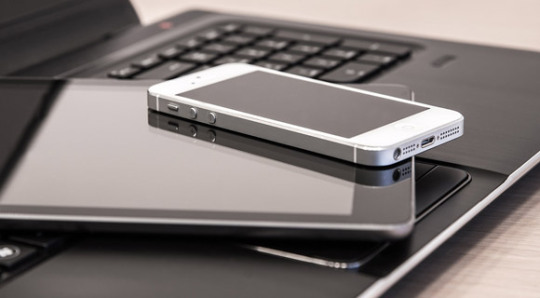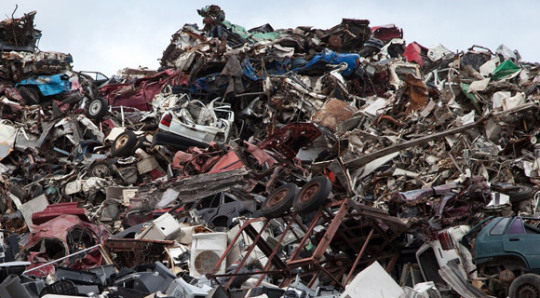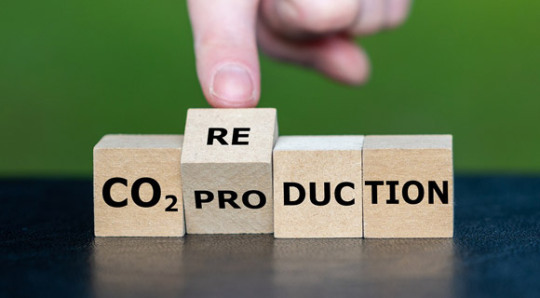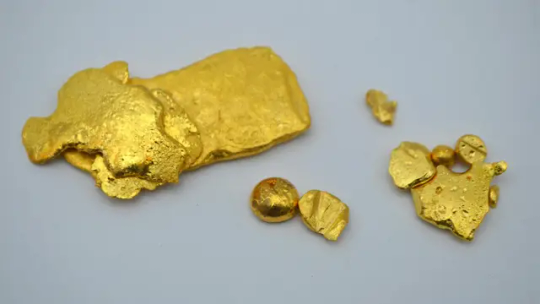#Recycle Electronics
Explore tagged Tumblr posts
Text
How Donations Turn Outdated Electronics into Opportunities

Discover what happens to your old electronic devices when you donate them. Understanding how donated electronics are repurposed and how they benefit the environment will strengthen your resolve to recycle them.

New Life Technology Group gathered the following information about how donated electronic equipment empowers others, reduces e-waste, reduces man’s carbon footprint, supports humanitarian efforts, and aids corporations in heightening their social responsibilities.
Why Donate Old Electronics
Upgrades, newer models, and changing preferences often leave us with an electronics collection that is outdated and no longer in practical use. Instead of letting these devices gather dust or contribute to the expansive e-waste problem, consider the transformative impact of donating old electronics:
Donated Electronics Empower Others

A significant reason to donate your outdated electronics is the potential to empower the less fortunate. In an era where access to technology is synonymous with access to education, employment opportunities, and vital information, not everyone can acquire the latest devices. Donating your outdated electronics (laptop, tablet, or smartphone) can provide someone in need with the tools to connect with the digital world.
Non-profit organizations, schools, and community centers often accept donated electronics to distribute to those who lack the financial resources to purchase these devices. In doing so, you empower individuals by giving them the means to access online education, job opportunities, and a informational wealth increasingly accessible only through digital channels.
Electronics Donations Reduce E-Waste

The environmental impact of electronic waste, or e-waste, is a growing global concern. Electronics often contain hazardous materials like lead, mercury, and cadmium, which can leach into the soil and water when not properly disposed. Donating your outdated electronics diverts them from landfills, reducing the environmental burden accentuated by e-waste.
Responsible e-waste recycling centers can salvage valuable materials from old devices, like metals, plastics, and glass, preventing the need for new raw materials. This conserves resources and reduces the energy consumption and environmental impact from material extraction and processing.
How E-Donations Reduce Our Carbon Footprint

Every manufactured electronic device has a carbon footprint (associated with its production process). By donating outdated electronics, you contribute to extending the device’s lifecycle, reducing new manufacturing. Electronics production involves energy-intensive processes, and raw material extraction can contribute significantly to carbon emissions.
Donating your outdated laptop to a non-profit organization, local charity, or a refurbished electronics program, enables someone else to use that device, postponing the need to acquire a new one. This simple act leads to a significant reduction in overall carbon emissions.
Electronics Donations Contribute to Humanitarian Aid
Donating outdated electronics plays a crucial role in humanitarian aid efforts, particularly in regions affected by disasters or those in development. When natural disasters strike, communication becomes an essential lifeline. Having access to functioning electronic devices can be a game-changer for affected communities. Read about charitable programs like Computers for Kids.
In areas where infrastructure is still developing, donated electronics can support educational initiatives, healthcare services, and economic development. Organizations operating in these regions often seek electronics donations to enhance their capacity to provide essential services and empower local communities.
Watch this video to better understand our e-donation process.
youtube
E-Donations and Corporate Social Responsibility
Corporations also have compelling reasons to donate their outdated electronics. Beyond the immediate benefits of social impact, engaging in corporate social responsibility (CSR) initiatives, including e-donations, can enhance a company’s public image and brand reputation. Consumers increasingly value businesses that demonstrate commitment to environmental sustainability and social causes.
Donating outdated electronics aligns with the principles of the circular economy, where resources are kept in use for as long as possible. This showcases a company’s commitment to sustainability and contributes to cost savings by reducing the need for new purchases and disposal expenses.
Read more about business donations at newlifetechgroup.com/business-donations-to-non-profit-organizations-why-and-how/
Schedule a pickup now.
Electronics Donations Transformative Potential
In this article, you discovered compelling reasons why individuals and corporations should consider donating their outdated electronic devices.
The impact of donating outdated electronics extends far beyond decluttering your living space. It is a powerful way to empower individuals, reduce e-waste, reduce environmental impact, and contribute to global humanitarian efforts.
Refusing to donate your outdated electronic devices leads to increased manufacturing needs and a significantly larger carbon footprint on our already fragile ecosystem.
Sources: epa.gov/smm-electronics/basic-information-about-electronics-stewardship gao.gov/products/gao-20-712sp ncbi.nlm.nih.gov/pmc/articles/PMC9970861/
New Life Technology Group
Receive refurbish and resale computer and IT equipment donations
2020 Howell Mill Rd NW Suite D-176 Atlanta, GA 30318
General Inquiries: +1 (404) 313-8215 Email: [email protected]
https://newlifetechgroup.com/
Computer and IT Recycling
To see the original version of this article, visit https://newlifetechgroup.com/how-donations-turn-outdated-electronics-into-opportunities/
#Computer Recyclers#Electronics Recycling#Recycle Electronics#Data Destruction#Non-Profit Recycler#How To Donate My Computers#Computer Donations#Youtube
1 note
·
View note
Text
Electronic Waste Recycling Market Size, Share, Forecast, & Trends Analysis

Meticulous Research®—a leading global market research company, published a research report titled ‘Electronic Waste Recycling Market—Global Opportunity Analysis and Industry Forecast (2025-2032)’. According to this latest publication from Meticulous Research®, the electronic waste recycling market is projected to reach $84.3 billion by 2032, at a CAGR of 13.6% from 2025–2032.
The short life cycle of electronic devices, the rising usage of these devices, the surge in e-waste generation worldwide, and strict government regulations on e-waste are driving the growth of the electronic waste recycling market. However, the high costs associated with the e-waste recycling process and fluctuations in raw material prices restrain the market’s growth.
Additionally, advancements in recycling technologies, increasing government subsidies and incentives, and a growing demand for consumer electronics present significant opportunities for market players. However, a lack of recycling infrastructure and illegal dumping of e-waste, particularly in developing countries, are some of the challenges impacting the market’s growth.
The integration of automation & robotics in e-waste recycling processes and the adoption of advanced material recovery technologies are prominent trends in the electronic waste recycling market.
Key Players: The electronic waste recycling market is characterized by a moderately competitive scenario due to the presence of many large- and small-sized global, regional, and local players. The key players operating in the electronic waste recycling market are UMICORE NV (Belgium), Boliden Group (Sweden), Aurubis AG (Germany), Veolia Environment SA (France), Enviro-Hub Holdings Ltd. (Singapore), Electronic Recyclers International, Inc. (U.S.), Stena Metall AB (Sweden), Tetronics International Limited (UK), Attero Recycling Pvt. Ltd. (India), Quantum Lifecycle Partners (Canada), Great Lakes Electronics Corporation (U.S.), Sembcorp Industries (Singapore), Cleanaway (Australia), Greentek Solutions, LLC (U.S.), and WM Intellectual Property Holdings, L.L.C. (U.S.).
The electronic waste recycling market is segmented based on material type, recycling technology, device type, and source. The report also evaluates industry competitors and analyzes the electronic waste recycling market at the regional and country levels.
Among the material types studied in this report, in 2025, the metals segment is anticipated to dominate the electronic waste recycling market. The growing demand for precious metals such as gold, silver, and platinum and the increased use of metals across various industries, including electronics, construction, and manufacturing, are factors contributing to the segment’s dominant position in the electronic waste recycling market. Among the recycling technologies studied in this report, in 2025, the pyrometallurgy segment is anticipated to dominate the electronic waste recycling market. This segment’s dominant position in the electronic waste recycling market can be attributed to the benefits offered by the pyrometallurgy method, including a high recovery rate for valuable metals like gold, silver, copper, and aluminum, versatility in processing various e-waste types, and low operational costs.
Among the device types studied in this report, in 2025, the household appliances segment is anticipated to dominate the electronic waste recycling market. The short life cycle of household appliances, decreasing costs of these appliances, increased availability of convenient collection programs offered by municipalities and recycling companies, and growing consumer awareness of the importance of recycling e-waste are factors contributing to the segment’s dominant position in the market.
Among the sources studied in this report, in 2025, the residential segment is anticipated to dominate the electronic waste recycling market. The segment’s dominant position in the electronic waste recycling market can be attributed to rising disposable incomes, the growing awareness of environmental issues among consumers, and the rising use of consumer electronics & smart home devices that contribute to higher volumes of discarded electronics in households.
Geographic Review:
This research report analyzes major geographies and provides a comprehensive analysis of the market in North America (U.S., Canada), Europe (Germany, U.K., France, Italy, Spain, Russia, Norway, Netherlands, Sweden, Denmark, Rest of Europe), Asia-Pacific (Japan, China, India, South Korea, Australia & New Zealand, Indonesia, Rest of Asia-Pacific), Latin America (Brazil, Mexico, Rest of Latin America), and the Middle East & Africa (UAE, Saudi Arabia, Israel, Rest of Middle East & Africa).
Among the regions studied in this report, in 2025, Europe is anticipated to dominate the electronic waste recycling market. Europe’s significant market share can be attributed to stringent regulations imposed by governments to manage e-waste disposal, high public awareness about the importance of recycling, and rising investments in advanced recycling technologies. Download Sample Report Here @ https://www.meticulousresearch.com/download-sample-report/cp_id=6045 Key Questions Answered in the Report- • What is the revenue generated from the electronic recycling market? • At what rate is the global demand for electronic waste recycling projected to grow for the next five to seven years? • What is the historical market size and growth rate for the electronic waste recycling market? • What are the major factors impacting the growth of this market at the global and regional levels? • What are the major opportunities for existing players and new entrants in the market? • Which market segments are anticipated to create major traction for the manufacturers in this market? • What are the key geographical trends in this market? Which regions/countries are expected to offer significant growth opportunities for the manufacturers operating in the electronic waste recycling market? • Who are the major players in the electronic waste recycling market? What are their specific product offerings in this market? • What are the recent developments in the electronic waste recycling market? What are the impacts of these strategic developments on the market? Contact Us: Meticulous Research® Email- [email protected] Contact Sales- +1-646-781-8004 Connect with us on LinkedIn- https://www.linkedin.com/company/meticulous-research
#Electronic Waste Recycling Market#E-waste Recycling#Electronics Recycling#Computer Recycling#Recycle Electronics#Electrical Equipment Recycling
0 notes
Text
How to Quickly Sell Your Phone with Phoneto™: Best Platforms for Instant Cash
In today's tech-driven world, phones quickly become outdated, and many of us, including myself, often find ourselves with old devices just sitting around. Throwing them away feels wasteful, and selling them seems like a hassle. But if you're looking for a fast and simple way to sell your phone, this guide highlights the best platforms for getting instant cash offers.

Why Sell Your Old Phone Sooner?
The smartphone market depreciates rapidly, with old models losing value quickly. For instance, Decluttr data shows that a new iPhone can lose up to 40%-60% of its value in the first year. The iPhone 14, released in 2023, saw its price drop by 42% within nine months. That’s why selling your phone sooner ensures you get the best possible price.
Moreover, phones degrade over time, with battery life shortening and screens wearing down, which lowers their resale value. Whether you want to maximize your return or reduce waste, selling your phone sooner rather than later is always the best option.
The Environmental Impact
The world is facing a growing e-waste problem, with over 50 million tons of electronic waste generated globally each year. Only 20% of that is properly recycled, according to a UN report. Selling your phone doesn’t just benefit your wallet—it also contributes to reducing e-waste. As more people become environmentally conscious, selling used phones to recycling agencies has become a popular choice, especially in regions like Europe and the US, where environmental awareness is growing. By selling your phone, you help protect the planet and support the circular economy.
Top Platforms for Quick Cash Offers
While platforms like eBay or Craigslist are well-known, they can take time and effort, with price negotiations and unreliable buyers. If you need quick cash, here are faster and more reliable options:
Physical Buyback Stores Retailers such as Apple Store, Best Buy, and Verizon offer fast in-store evaluations and instant cash or store credit. Apple’s 2023 Trade-In Program allows you to trade in an iPhone 13 for nearly $400, which you can apply toward a new device. It's a quick, hassle-free option for those upgrading their phones.
Online Buyback Platforms If you'd rather avoid leaving the house, online buyback platforms are convenient for getting an instant quote and quick payment.
Gazelle: Known for fast transactions, Gazelle offers an average processing time of under 48 hours. Once you ship the phone, you can receive payment quickly via PayPal or check.
Decluttr: As one of the largest recycling platforms, Decluttr provides free shipping and competitive quotes, with users averaging around $250 for a typical device.
Phoneto: A rising star in the buyback market, Phoneto offers instant quotes and fast payouts. Users have praised its intuitive interface and competitive pricing, with some earning up to $350 for newer models like the iPhone 13. After you ship your phone for free, Phoneto ensures payment within 48 hours.

Carrier Buyback Programs Carriers like Verizon, AT&T, and T-Mobile offer trade-in programs that can be completed within minutes. These programs are ideal if you’re upgrading your phone, with Verizon's program offering up to $1,000 in credit for top models.
Second-Hand Marketplaces Although slower, platforms like Swappa are becoming popular in 2024, offering secure transactions. Unlike eBay, Swappa provides protection for both buyers and sellers, making it a safer option for private sales. With 30% growth in transactions in 2023, average sale prices for phones range from $250 to $400 depending on the condition.
Prepping Your Phone for Sale
Before selling, protect your data by:
Restoring factory settings
Removing your SIM card
Unlinking iCloud or Google accounts
Deleting personal apps and data
These steps not only ensure your privacy but can also help you fetch a higher price for your device.

Conclusion
Selling your phone can be fast and easy with the right platform. Whether you choose a physical store, online buyback platform, or carrier program, there are plenty of reliable options for turning your old phone into cash. In 2024, platforms like Phoneto, Gazelle, and carrier buyback programs offer some of the best ways to get instant offers while contributing to sustainability.
1 note
·
View note
Text
"Scientists have developed a way to dramatically reduce the cost of recycling certain electronic waste by using whey protein.
Their method allows for the easy recovery of gold from circuit boards at a cost of energy and materials amounting to 50 times less than the price of the gold they recover—these are the numbers that big business likes to see.
Indeed, the potential for scalability depends on this sort of cost savings, something traditional e-waste recycling methods just can’t achieve.
Professor Raffaele Mezzenga from ETH Zurich has found that whey protein, a byproduct of dairy manufacturing, can be used to make sponges that attract trace amounts of ionized gold.
Electronic waste contains a variety of valuable metals, including copper, cobalt, and gold. Despite gold’s public persona as being either money or jewelry, thousands of ounces of gold are used in electronics every year for its exceptional conductive properties.
Mezzenga’s colleague Mohammad Peydayesh first “denatured whey proteins under acidic conditions and high temperatures, so that they aggregated into protein nanofibrils in a gel,” writes the ETH Zurich press. “The scientists then dried the gel, creating a sponge out of these protein fibrils.”
The next step was extracting the gold: done by tossing 20 salvaged motherboards into an acid bath until the metals had dissolved into ionized compounds that the sponge began attracting.
Removing the sponge, a heat treatment caused the gold ions to aggregate into 22-carat gold flakes which could be easily removed.
“The fact I love the most is that we’re using a food industry byproduct to obtain gold from electronic waste,” Mezzenga says. In a very real sense, he observes, the method transforms two waste products into gold. “You can’t get much more sustainable than that!” ...
However the real dollar value comes from the bottom line—which was 50 times more than the cost of energy and source materials. Because of this, the scientists have every intention of bringing the technology to the market as quickly as possible while also desiring to see if the protein fibril sponge can be made of other food waste byproducts.
E-waste is a quickly growing burden in global landfills, and recycling it requires extremely energy-intensive machinery that many recycling facilities do not possess.
The environmental value of the minerals contained within most e-waste comes not only from preventing the hundreds of years it takes for them to break down in the soil, but also from the reduction in demand from new mining operations which can, though not always, significantly degrade the environments they are located in.
[Note: Absolutely massive understatement, mining is incredibly destructive to ecosystems. Mining is also incredibly toxic to human health and a major cause of conflict, displacement, and slavery globally.]
Other countries are trying to incentivize the recycling of e-waste, and are using gold to do so. In 2022, GNN reported that the British Royal Mint launched an electronically traded fund (ETF) with each share representing the value of gold recovered from e-waste as a way for investors to diversify into gold in a way that doesn’t support environmentally damaging mining.
The breakthrough is reminiscent of that old fairy tale of Rumpelstiltskin who can spin straw into gold. All that these modern-day, real-life alchemists are doing differently is using dairy and circuit boards rather than straw."
-via Good News Network, July 19, 2024
#ewaste#waste disposal#recycling#environment#e waste#e waste recycling#electronics#gold#mining#gold mining#wheyprotein#whey#chemistry#alchemy#good news#hope
495 notes
·
View notes
Text
(jotaro is texting some family members)
jotaro: giorno you're my favorite estranged family member
josuke: WHAT THE FUCK
jotaro: i like you better than josuke because he doesn't recycle
giorno: he what
josuke: wow. literally crying rn
tomoko: no he's not, i'm looking at him right now and he's laughing
giorno: jotaro you have to say the words now
jotaro: you can't make me say the "i love you" words
josuke: you just did
jotaro: fuck
jotaro: josuke i love you even though you don't recycle
giorno: peace and love on planet earth. even though josuke doesn't recycle
josuke: STOP BULLYING ME
#it's because he doesn't have to recycle lol he can just fix anything when it breaks (i.e. appliances and electronics etc)#y'all what am i doing with my life lol#jojokes#jotaro kujo#josuke higashikata#giorno giovanna#tomoko higashikata#jojo's bizarre adventure#jjba
52 notes
·
View notes
Text
By Susan Campbell
Published: Jan. 10, 2025 at 2:07 PM MST
PHOENIX (AZFamily) — We use a lot of electronics. We upgrade often, and e-waste is piling up. If Santa upgraded any of your electronics this holiday season, it’s time to get rid of the old stuff, but you don’t want to toss it in the trash.
“There’s only about 12% of electronics inside of our landfills, but they make up 70% of the harmful toxins inside of our landfills,” said Brian Dyer of Westech Recyclers in Phoenix.
The e-waste recycler collects old electronics to be reused and recycled. “We take close to six million pounds of electronics every year,” Dyer said.
Everything is sorted. If it still works, it may be resold. “They’ll end up back on the market,” Dyer said, pointing to a dozen laptops being tested in the warehouse. “While they may not be brand new, they will be new to that person that is picking them up through our retail store.”
If an item cannot be resold, it’s taken apart. Workers can dismantle a computer in minutes, pulling apart every piece, down to the last screw.
“The boards that are inside of your computer will have palladium and gold on them, small amounts, but those are precious metals that we will never get back if they go to a landfill, so we will take those in, pull those boards off, send them to a responsible recycler downstream and they will harvest those materials back out of the boards,” Dyer explained.
When e-waste is recycled, data is destroyed to protect any information that used to be on those old devices. “Anytime that we can reuse something, or reduce it and recycle it, is really best for the environment,” Dyer said.
Westech is hosting several collection events. The company also offers free pickups for ten items or more.
55 notes
·
View notes
Text

This breakthrough turns old tech into pure gold — No mercury, no cyanide, just light and salt
An interdisciplinary team of experts in green chemistry, engineering and physics at Flinders University in Australia has developed a safer and more sustainable approach to extract and recover gold from ore and electronic waste. Explained in the leading journal Nature Sustainability, the gold-extraction technique promises to reduce levels of toxic waste from mining and shows that high purity gold can be recovered from recycling valuable components in printed circuit boards in discarded computers. The project team, led by Matthew Flinders Professor Justin Chalker, applied this integrated method for high-yield gold extraction from many sources - even recovering trace gold found in scientific waste streams.
Read more.
#Materials Science#Science#Gold#Recycling#Electronics#Waste#Reactions#Materials processing#Flinders University
23 notes
·
View notes
Text
Me: "Murderbot starts tomorrow. Can't wait. Gotta think about something else."
Sidebar Ad: *selling shoes*
Me: "Oh wow, those look like something they'd wear on Preservation!"

(They really do.)
#you can't tell me I'm wrong#Murderbot#shoes#also FYI our TV broke on Tuesday night#spontaneously; the backlight strip that makes it possible to see the LEDs stopped working#so on Wednesday I contacted repair shops and electronics stores and umpteen billion websites#and found that it wasn't worth the money to fix#when there was a new one of a similar kind at a discount nearby#the same store recycles old TVs#so we swapped them out#and now there's a shiny new one mostly installed correctly#the screws for the wall mount are too long#but we'll get new ones soon#and most importantly it WORKS#so we can watch Murderbot tomorrow#aaaaaaaaaa#gonna be gone all day today#so glad we got that fixed#unrelated: I'll be wearing my 'ART sent me' hat today#maybe I'll wear my Sanctuary Moon shirt too
20 notes
·
View notes
Text
Transforming base materials into gold was one of the elusive goals of the alchemists of yore. Now Professor Raffaele Mezzenga from the Department of Health Sciences and Technology at ETH Zurich has accomplished something in that vein. He has not of course transformed another chemical element into gold, as the alchemists sought to do. But he has managed to recover gold from electronic waste using a byproduct of the cheesemaking process. Electronic waste contains a variety of valuable metals, including copper, cobalt, and even significant amounts of gold. Recovering this gold from disused smartphones and computers is an attractive proposition in view of the rising demand for the precious metal.
Continue Reading.
99 notes
·
View notes
Text
You're still there. It's really nice to have a space for the kind of vibesy stuff that wouldn't fit naturally into my existing catalogue. Yesterday afternoon I listened to seagulls in the background of my friend's room over a discord call and it made me think about the lake and how the lake is my friend and about how the lake is my enemy and about how the ocean is my friend and the ocean is my enemy and I'm still at the lake and I'm still at the ocean and SO ARE YOU!!!
The words:
When you fell behind The rising waterline You were all alone And I should've known
Down below the waves Of the endless, stormy Lake There can be no other She was our only Mother
And if you had a spirit In the body of a gull Into the Lake you'd fall For they broke your little wings And so you'd fall behind The rising waterline And drown beneath the waves Of an endless stormy Lake.
Every night you see it: Gulls on the water, drinking from the ocean. Thunderheads are rolling, burning the horizon.
(In your dreams, you're still there.)
#electronic music#this also kind of recycles a theme from something that i dont see much of a future for so im not too worried about it#but maybe one day itll resurface because of who i am as a person
3 notes
·
View notes
Text
#Electronic Waste Recycling Market#E-waste Recycling#Electronics Recycling#Computer Recycling#Recycle Electronics#Electrical Equipment Recycling
0 notes
Text
E-Waste 101

(Image by Morten B.)
E-waste, simply put, is short for electronic waste. The U.S. EPA synonymies e-waste with "e-scrap" and "end-of-life electronics" as well. Typical examples of e-waste include computers, electrical equipment, phones, and headphones.
But why the separate title? Why can't e-waste just be labeled as regular waste? Well, because most electronics have two unique attributions: being very bad for the environment, and being incredibly hard to recycle. This is exactly what the Oxford Dictionary details about e-waste, including in the definition, "typically containing environmentally hazardous substances and requiring special treatment for safe disposal or recycling."
These attributions are the cause for a very important questions: what does e-waste actually do to the environment? As described by the U.S. Public Interest Research Group, about 6.9 million tons of e-waste is generated in just the U.S., and if not recycled properly, will lead to hazardous materials such as battery acid, lead, and mercury leaching into local soil and groundwater.
Unfortunately, talking about how electronics are recycled is heavily complicated and heavily boring. However, I can surely talk about how little e-waste is actually recycled. According to the WHO (not the band), less than a quarter of e-waste was properly documented and recycled globally. A QUARTER... GLOBALLY. It doesn't necessarily matter how e-waste is recycled if it ain't being recycled in the first place.
Now that the problem is properly in context, it's time to consider one of the biggest contributors to e-waste, one that will shape future research and put a spotlight on big tech companies. That contributor is a little concept called planned obsolescence.
Planned obsolescence, as described by Wendy Hamblet in the Salem Press Encyclopedia of Science, is designing and building a product in a way that ensures the owner seeks to replace it after a certain amount of time. This concept applies to all products, but lately the term is most associated with electronic devices.
Given the definition has an implicit incentive structure to make a product last for less time in order to sell more products, it's no shock that this concept can be seen in most big technology companies who sell highly valuable (expensive) devices. The biggest offenders are companies that make a new product every single year (cars, phones, computers), subsequently arbitrarily removing support for an older product (just look at Apple for an example).
As stated previously, planned obsolescence will be a major focal point when analyzing tech companies, comparing what they say about being environmentally friendly, versus what they actually do with their products and advertising.
6 notes
·
View notes
Note
I'm worried about electronic waste, e-waste recycling, and such loss of resources.
That's real. For what it's worth, I think it's something we're going to get a LOT better at. The raw materials - and even partially depleted materials that can be downcycled - are too valuable to be left forever.
Tip for anyone worried about e-waste or looking to be more environmentally conscious: Whenever I have something electronic that dies (this includes batteries, power cords, string lights, and vapes), I stick it in an out-of-the-way drawer, and then once every year or two, I bring it all to either an e-waste recycling place or an e-waste disposal place (which, my understanding is most e-waste disposal places do a lot of materials reclamation as well, though if I'm wrong someone please correct me). I just look online to find a place.
Sometimes it's a bit of a drive, but it's so worth it. I encourage others to do the same!
Anyway, here's some headlines about e-waste to hopefully lift your spirits:
^That's Western Australia, not Washington state.
#dyingpleasehelp#ewaste#e waste#waste disposal#electronics#recycling#batteries#lithium#rare earth metals#good news#hope#united states#australia#rwanda
208 notes
·
View notes
Text
Fun exciting plural moment this morning my headmates were mad at me bcos they wanted me to get up but I kept snoozing my alarm for several hours. Not actually that mad but I did wake up properly and then LOL at the memory of someone going WAKE UP DIPSHIT while i turned off my 8am alarm and went back to sleep
#'doesnt know shit from fuck' disclaimer but the current set-up is me (he/him) blathnaid (she/her) and vanitas (idk yet. he/him Maybe but :/)#anyway library today yayyyyyy and then i go to the electronics store to drop off my electric waste 4 recycling ^_^
9 notes
·
View notes
Text
they weren’t kidding about the tenna effect now i can’t think about my old childhood crt without getting really fucking sad about it
#it was an extra tv that i used in a side room when i wanted to watch a dvd/vhs tape or play ps2 games#when one of my parents was using the bigger ‘main tv’#we dropped it off at some electronic recycling thing a few years back …… oughhh tenna i’m sorryyyyyy#🐇💬
5 notes
·
View notes
Text

Turning trash into treasure: How microwaves are revolutionizing e-waste recycling
You may not have heard of tantalum, but chances are you're holding some right now. It's an essential component in our cell phones and laptops, and currently, there's no effective substitute. Even if you plan to recycle your devices after they die, the tantalum inside is likely to end up in a landfill or shipped overseas, being lost forever. As a researcher focused on critical materials recovery, I've spent years digging through electronic waste, not seeing it as garbage, but as an urban mine filled with valuable materials like tantalum.
Read more.
26 notes
·
View notes